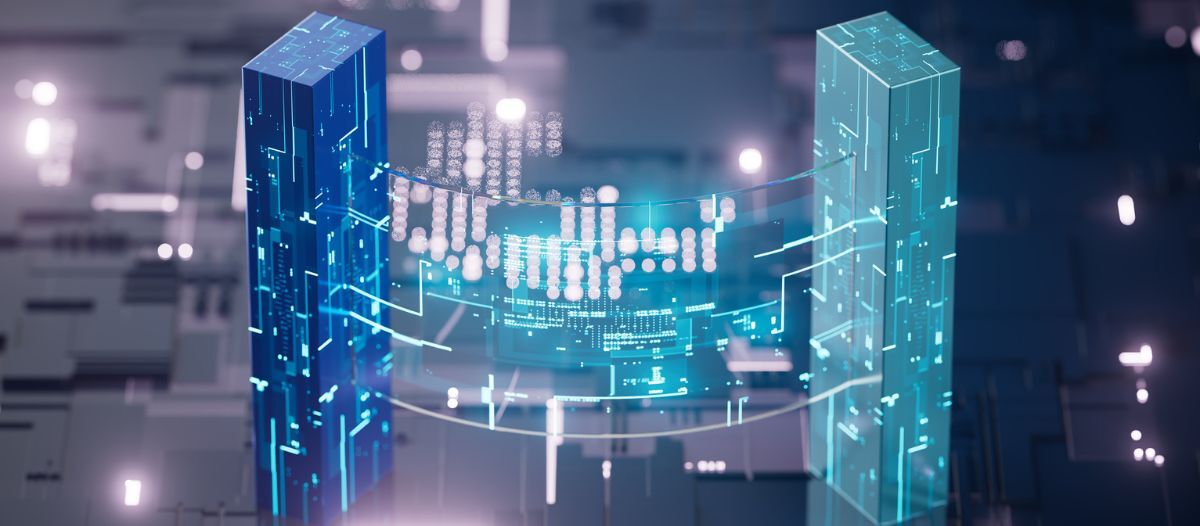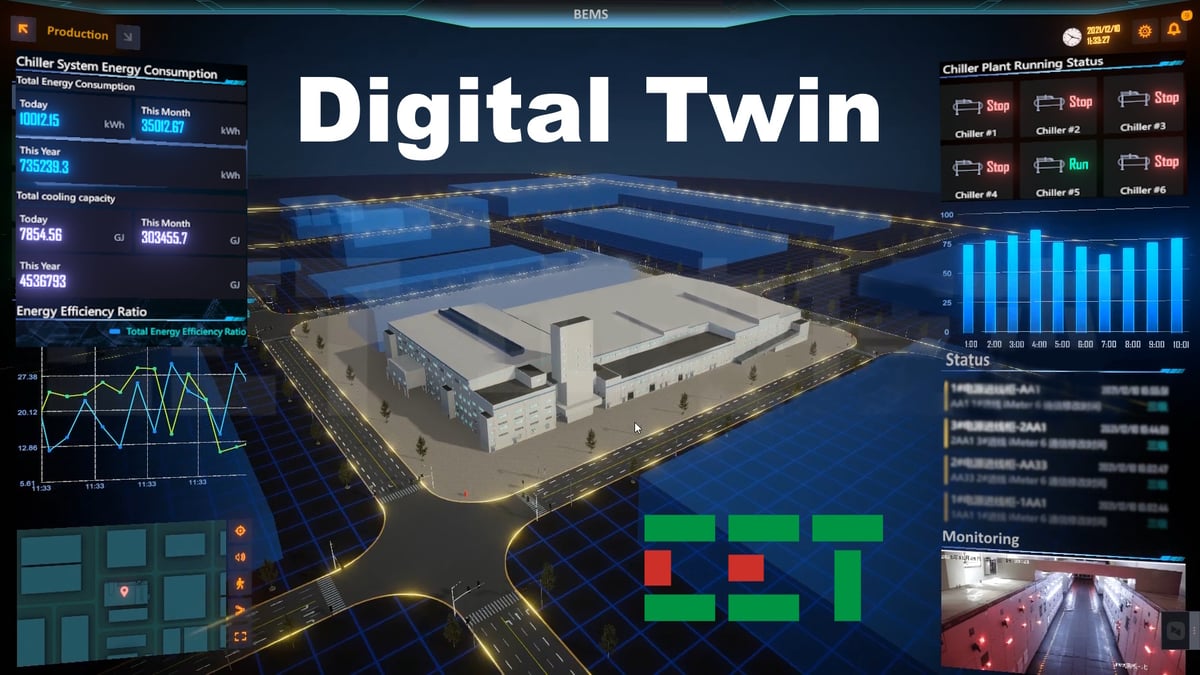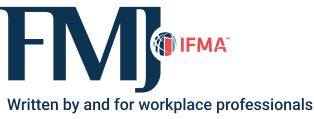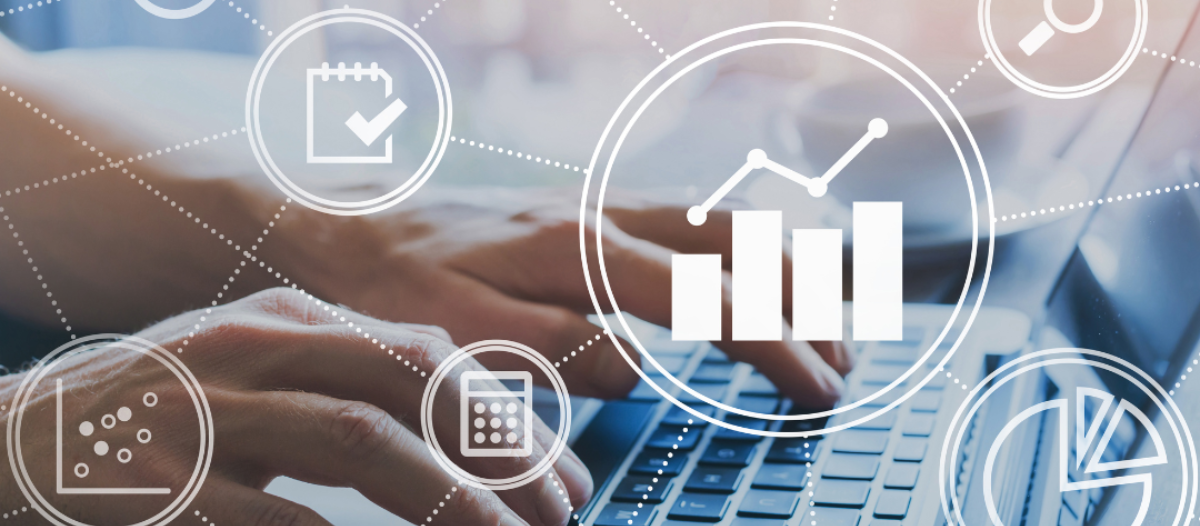Building the Future of Smart Assets & Facilities
The power of digital twinning

Facilities equipped with digital twins predict compressor failures a week in advance, optimize energy use in real time based on occupancy and track carbon emissions to meet net-zero goals — while achieving substantial cost savings. Consider a bustling office tower where lights dim automatically in unoccupied rooms, elevators anticipate peak-hour rushes, and maintenance crews receive alerts for potential issues before they escalate into costly breakdowns. As a maturing technology, digital twinning drives this transformation into facility management. It facilitates proactive, intelligent decision-making across the entire asset life cycle, turning reactive fixes into strategic foresight that not only saves money but also enhances occupant satisfaction and environmental responsibility.
A digital twin consists of a dynamic, real-time digital replica of a physical asset, process or system. Unlike static models such as building information modeling (BIM), which capture design data at a fixed point, digital twins synchronize continuously with real-world data from Internet of Things (IoT) sensors, building management systems (BMS), and computer-aided facility management (CAFM) platforms. Through artificial intelligence (AI) and machine learning (ML), they deliver predictive analytics, scenario simulations, and continuous performance optimization. For instance, AI algorithms can analyze historical patterns to forecast equipment wear, allowing FM teams to simulate "what-if" scenarios — like the impact of a heatwave on cooling systems — before adjusting.

Driving forces behind adoption
The adoption of digital twins accelerates through several converging technologies, each building on the others to create a robust ecosystem for smart facilities:
- IoT sensors: These provide real-time insights into energy use, occupancy, air quality, and system performance. Deployed across assets, they generate vast data streams that feed into the twin, enabling granular monitoring that was once impossible with manual checks.
- AI/ML algorithms: These enable forecasting, anomaly detection, and adaptive control. By learning from data patterns, they identify subtle deviations—such as a slight increase in vibration—that signal impending failures, often weeks ahead.
- Cloud computing: This offers scalable access to data-intensive models, allowing even small facilities to leverage powerful computing without heavy on-site infrastructure investments.
- Open standards: Interoperability occurs via ISO 19650, Industry Foundation Classes (IFC), and BACnet, allowing seamless integration with CAFM tools. These standards ensure that data flows freely between systems, reducing silos and enhancing overall efficiency.
Together, these forces democratize advanced FM, making it accessible to organizations of all sizes and paving the way for innovative applications that go beyond basic monitoring.
Global case examples
Real-world implementations illustrate the transformative potential of digital twins.
-
A major technology company's campus in the United States integrated a cloud-based digital twin platform into multiple buildings, achieving notable energy savings of around 25 percent and operational efficiencies valued at millions annually. Predictive adjustments to heating, ventilation, and air conditioning (HVAC) systems enhanced air quality by 15 percent and minimized downtime by 40 percent, demonstrating how data-driven tweaks can create healthier, more reliable environments.
-
A national 3D digital twin project in Singapore models urban energy and pedestrian flows on a city-wide scale. It supports proactive retrofits and efficient design, contributing to infrastructure optimizations that have reportedly saved tens of millions of dollars. This initiative highlights the scalability of digital twins, from individual buildings to entire urban landscapes, where simulations help planners visualize and mitigate traffic bottlenecks or energy hotspots.
-
A large European airport employs a digital twin across terminals, runways and baggage systems, integrated with extensive IoT devices — over 250,000 in some cases. The system enhances passenger flow, reduces energy usage by 20 percent and enables dynamic gate assignments that adapt to delays or surges in traffic. According to reports, such implementations can reduce emissions by up to 30,000 tons annually through optimized operations, offering a blueprint for high-traffic facilities worldwide to balance efficiency with sustainability.
-
An energy company in the Middle East applied digital twins at major facilities, resulting in approximately 30 percent improvement in asset reliability and a 15 percent drop in maintenance costs. These systems inform broader FM strategies across commercial infrastructure, such as predictive scheduling for inspections that prevent outages in critical oil and gas operations.
These examples underscore the versatility of digital twins, adapting to diverse sectors from tech campuses to industrial giants.
Life cycle impact
Digital twins provide value at every facility stage, embedding intelligence from conception to end-of-life:
-
Design & construction: They enable clash detection (*identification of design conflicts*), energy simulations, and coordinated planning. For example, virtual models can test building layouts for optimal airflow, reducing future retrofits.
-
Commissioning & handover: They validate systems against design intent and streamline asset documentation, ensuring that handover includes live data feeds for immediate operational insights.
-
Operations & maintenance: They support predictive maintenance, anomaly detection, real-time monitoring, and CAFM integration. This phase often yields the highest ROI, as ongoing optimizations cut downtime and extend asset life.
-
Sustainability & environmental, social and governance (ESG): They aid compliance with ISO 50001/55001 and facilitate achieving Leadership in Energy and Environmental Design (LEED) and WELL certifications. By tracking metrics like carbon footprints, twins help facilities align with global sustainability mandates.
-
Retrofit & decommissioning: They utilize historical data for lifecycle planning and circular economic strategies (approaches that reuse materials to minimize waste). In decommissioning, twins simulate safe dismantling processes, recovering value from assets.
This comprehensive coverage ensures that digital twins are not a one-off tool but a lifelong companion for assets.
Getting started: Practical steps for FM teams
Facilities prepared to implement digital twinning benefit from a phased approach that minimizes risks and maximizes early wins.
-
Practical takeaway: Begin with a thorough assessment to prioritize areas where digital twins can deliver quick value.
High-impact use cases involve critical systems such as chillers, HVAC zones or data centers, where unplanned downtime incurs high costs. For instance, mapping out failure modes in these systems can reveal opportunities for 20-30 percent efficiency gains.
System compatibility ensures platforms support open standards and application programming interfaces (APIs) for integration with existing CAFM or BMS systems.
-
A key tip: Conduct an interoperability audit early to avoid data silos that could derail the project.
Cross-functional teams include stakeholders from FM, information technology (IT), sustainability and procurement to align goals and resources. Engaging diverse perspectives fosters buy-in and uncovers hidden synergies, such as linking FM data with corporate ESG reporting.
Key performance indicators (KPIs) and benchmarks define objectives like reduced energy use, faster issue resolution, or improved ESG metrics.
-
Practical takeaway: Set SMART (Specific, Measurable, Achievable, Relevant, Time-bound) KPIs, such as targeting a 15 percent energy reduction within the first year and tracking them via dashboards.
Gradual scaling follows validation of return on investment (ROI), expanding across other systems, zones, or entire buildings. Start small to build momentum — piloting in one zone can provide proof-of-concept data to secure funding for broader rollout.
Managing emerging challenges
During the COVID-19 pandemic, digital twins assisted in managing indoor air quality, space density, and cleaning schedules, adapting facilities to unprecedented health demands. In a European office, congestion decreased by 40 percent through real-time occupancy data, illustrating how twins can pivot to crisis response.
In schools and hospitals, twins facilitated virus-spread modeling and HVAC recalibration. By simulating airflow and foot traffic, facilities optimized ventilation and cleaning without disrupting operations.
-
Practical takeaway: Incorporate flexibility in twin designs to handle unforeseen events, such as integrating health sensors for future pandemics or natural disasters.
These adaptations not only mitigated immediate risks but also built resilience, showing how digital twins evolve with global challenges.
Comparative value over traditional FM
Traditional FM depends on static data and reactive maintenance, leading to inefficiencies and higher costs — such as unexpected repairs that can balloon budgets by 20-50 percent. Digital twins, in contrast:
-
Enable proactive decision-making and reduce operational risk by anticipating issues.
-
Integrate live data streams to adapt to changing conditions, like fluctuating occupancy in hybrid workplaces.
-
Facilitate long-term asset planning with accurate, historic performance data, informing capital investments.
Studies indicate that facilities using digital twins experience operational expenditure (OPEX) reductions of up to 30 percent and downtime reductions of up to 45 percent.
-
Practical takeaway: Transitioning requires a mindset shift — train teams on data literacy to fully leverage these advantages over outdated methods.
Rise of autonomous facilities
The next frontier involves autonomous operations, where facilities operate with minimal human intervention. Digital twins integrated with AI:
-
Adjust HVAC and lighting dynamically based on real-time data.
-
Trigger maintenance orders automatically when thresholds are met.
-
Optimize energy during peak tariffs by shifting loads intelligently.
-
Reassign space in hybrid work settings to maximize utilization.
At a major international exposition in the Middle East, digital twins across numerous buildings improved energy distribution by 15 percent, providing a blueprint for smart urban environments that learn from usage patterns. Imagine a building that "learns" employee preferences, adjusting temperatures or layouts to boost productivity—this is the promise of autonomy.
As 5G, edge computing and AI proliferate, the real-time intelligence of digital twins enables facilities to learn, adapt, and operate independently, transforming buildings into self-optimizing entities.
- Practical takeaway: Explore AI partnerships to pilot autonomous features, starting with low-risk areas like lighting controls.
 Global relevance
Global relevance
Initiatives such as Vision 2030 projects in Saudi Arabia including NEOM and The Line, embed digital twins from inception. These environments simulate traffic, utilities, climate and logistics to create zero-carbon, adaptive cities that respond to resident needs in real time. Similar efforts in Europe, like the European Union's Green Deal, focus on retrofitting existing infrastructure with twins for energy efficiency, while in Asia, projects in cities like Singapore and Tokyo integrate AI, data analytics, and automation to manage dense urban populations. These global examples redefine FM roles, elevating professionals from maintainers to strategic innovators who leverage technology for societal benefits.
Digital twins & ESG reporting
Digital twins serve as enablers for ESG compliance and transparency, bridging operational data with regulatory demands. They provide:
-
Real-time tracking of energy, water, and waste, offering dashboards for instant audits.
-
Dashboards aligned to global standards like Global Real Estate Sustainability Benchmark (GRESB) and Carbon Disclosure Project (CDP), simplifying reporting.
-
Auditable data logs for ISO certification and investor reports, ensuring traceability.
A manufacturing company's headquarters in Europe achieved LEED Platinum certification and avoided significant CO2 emissions annually—around 30 percent reductions—using digital twin-led optimization of lighting and HVAC.
-
Practical takeaway: Use twins to automate ESG reports, reducing manual effort and improving accuracy for stakeholder communications.
Implementation roadmap
To guide FM teams, consider this structured roadmap:
-
Pilots target critical systems, such as chillers or HVAC zones, with clear success criteria to demonstrate value quickly.
-
Interoperability relies on ISO-compliant data protocols, ensuring long-term scalability.
-
Team upskilling trains FM personnel in IoT, analytics and ISO 55001 through workshops or certifications, building internal expertise.
-
Cybersecurity prioritizes controls from the National Institute of Standards and Technology (NIST) and ISO 27001, including regular vulnerability assessments to protect sensitive data.
-
Practical takeaway: Allocate budget for training and security from the outset, as these investments pay dividends in adoption and risk mitigation.
-
Conclusion
Digital twins enable a shift from reactive to intelligent FM. By integrating real-time data, analytics, and lifecycle insight, they deliver unmatched value for asset-intensive environments, fostering innovation and resilience. As global FM evolves amid climate pressures and technological advances, digital twinning represents an imperative for operational excellence, sustainability and strategic foresight — empowering facilities to not just function but thrive.

References
Additional resources
-
A framework for integrating digital twins into existing buildings: https://www.tuvsud.com/en-us/resource-centre/white-papers/a-digital-twin-framework-for-existing-buildings
-
An open-access study on digital twins in the built environment: https://openaccess.cms-conferences.org/publications/book/978-1-958651-34-6/article/978-1-958651-34-6_34
-
ISO 19650 overview for information management: https://www.iso.org/standard/68078.html
Read more on Technology , Real Estate and Operations & Maintenance or related topics Operational Technology , Facility Technology and Operations and Maintenance Planning
Explore All FMJ Topics









